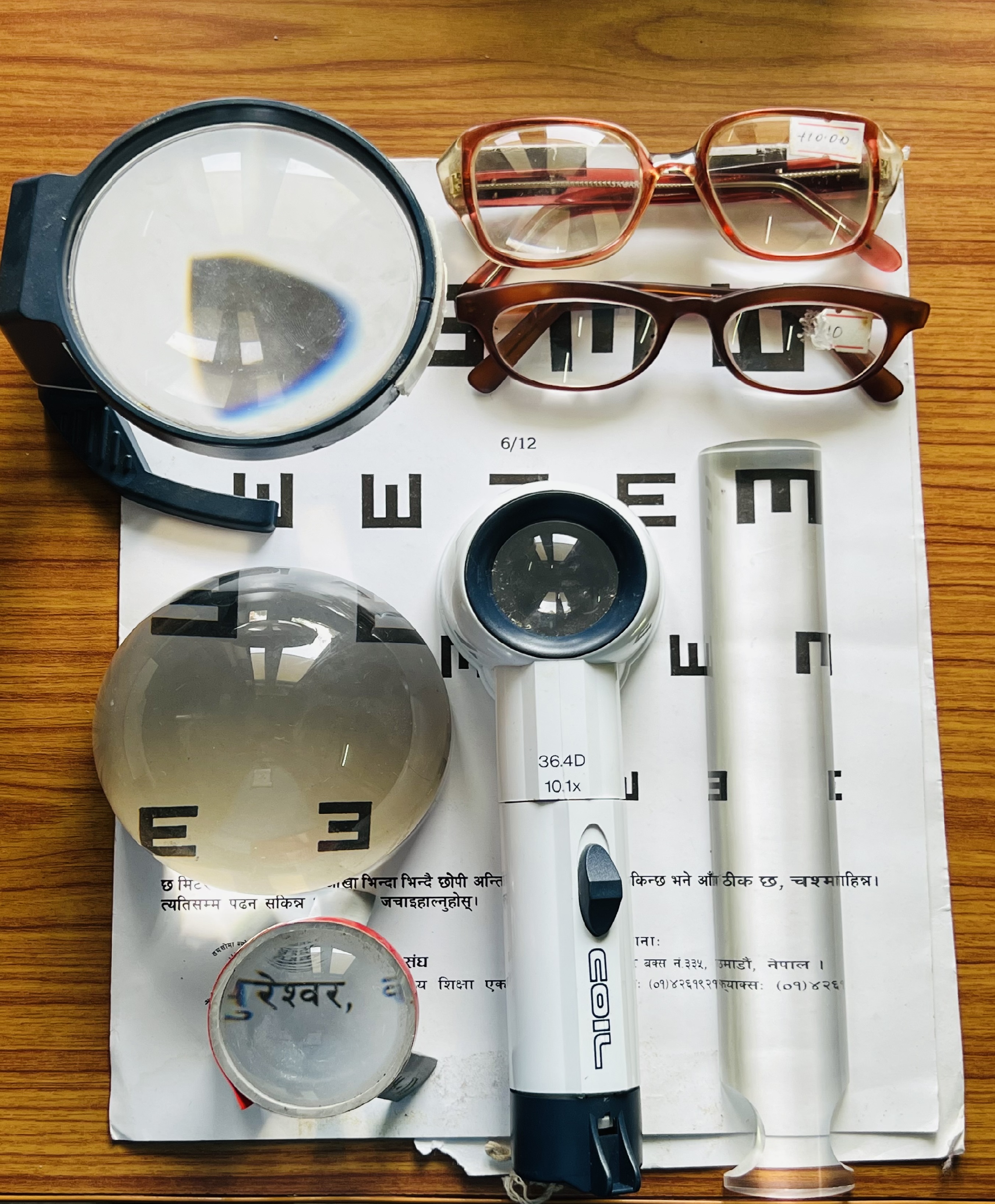
Low Vision and Rehabilitation Services
The term low vision is often referred to as visual impairment, visual disability, or partial sight, but in general it is any loss of functional vision that persists after the correction of distance refractive error and common eye-related or surgical presbyopia. It is argued that low vision is a disability as opposed to an impairment. Low vision refers to an inability to perform everyday tasks, such as reading or recognizing faces, resulting from a visual impairment. Therefore, it can also be said to be a consequence of visual impairment. Low vision may also be defined objectively by task performance or
subjectively by self-reported task difficulty.
The World Health Organization (WHO) defines a person who needs low vision care as “someone who has an impairment of visual functioning even after treatment and/or standard refractive correction, and has a visual acuity of less than 6/18 to light perception, or a visual field less than 10 degrees from the point of fixation, but who uses, or is potentially able to use, vision for the planning and/or execution of a task.” (World Health Organization,1992).
Blindness is defined as visual acuity less than 3/60 in the better eye after best possiblecorrection and visual field < 10 degree from the point of fixation. It is also defined as no usable vision with the exception of light perception.
Low Vision Service at HEH:
A separate low vision unit is established at the department of Optometry under responsibility of an optometrist. Low vision patients referred from the general OPD, paying OPD and special clinic within the hospital are examined daily. Average of 2 low vision patients visit the low vision unit daily from internal and external referrals. Most of the patient’s visiting low vision clinic are children. Detailed low vision evaluation is performed at the low vision unit; evaluation mostly focused at clinical assessment and visual rehabilitation. Many are helped by refractive correction and advices for additional lighting along with some environmental modifications. Commonly prescribed low vision devices are hand held magnifiers, spectacle magnifiers and m/o telescopes based on availability. Expectations of the patients’ visiting low vision unit varies from best possible vision, knowledge regarding present visual status,possible outcomes, possibilities of better technology for treatment in future, prognosis of the present ocular condition and available means to improvise distance or near vision. Few patients visit the clinic with the intention of making visual impairment certificate either of low vision or blindness with a purpose of making disability certificate.
To summarize the following activities are performed at the low vision unit at our hospital:
- Clinical low vision assessment
- Functional vision assessment
- Advice on optical and non-optical low vision devices
- Provision of devices from the device stock in the hospital based on availability
- Make order for the new device based on patient’s need and demand
- Recommendation for visual impairment certificate which further leads to making of disability
certificate from the government
- Recommendations on selection of learning media for school children based on status of
present vision
- Advise parents or teachers on how to deal with the Visual Impairment problem of children
- Share information to parents regarding availability of schools and special training centres for
visually impaired children
- Perform routine school screening programmes to trace visually impaired children in school
- Perform eye screening programs at selected integrated schools for visually impaired to rule
out present status of vision and performance of children at school
- Provision of low vision devices free of cost to students at integrated schools on specific
occasions
- Coordinate with the teachers at integrated schools and resource centre, organizations
working for the welfare of visually impaired like NAB,CBR etc. to facilitate service to the
visually impaired and reach them.
